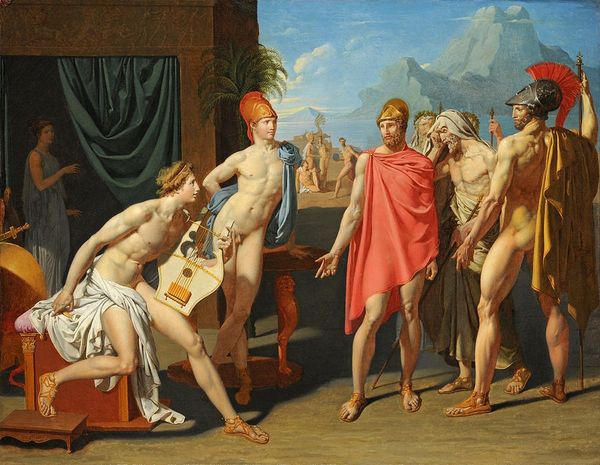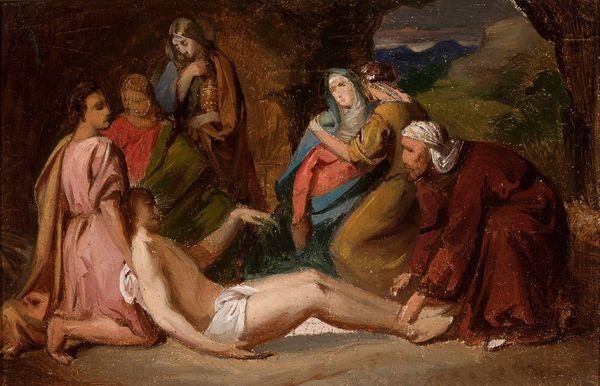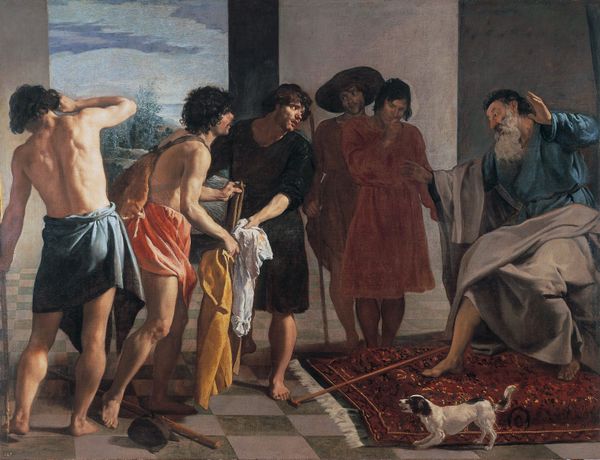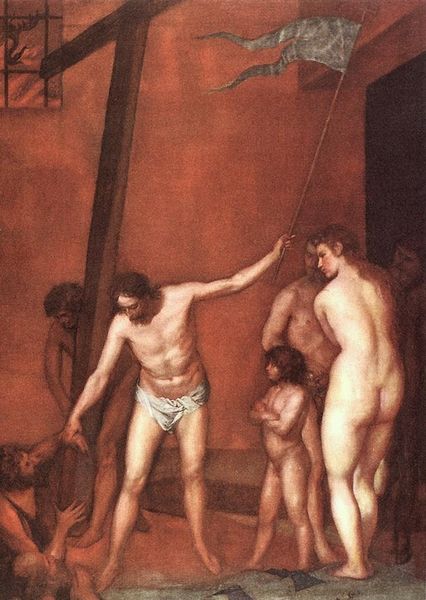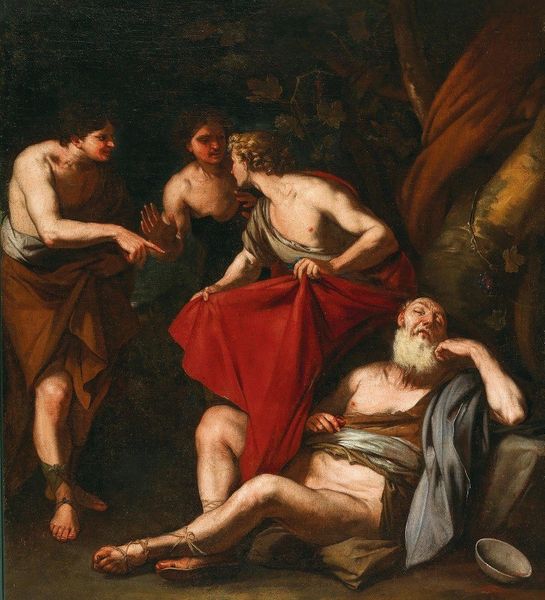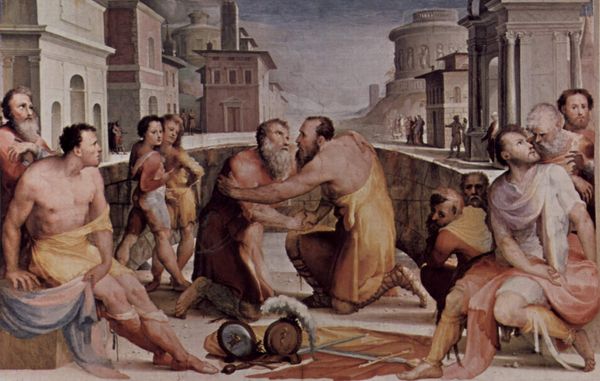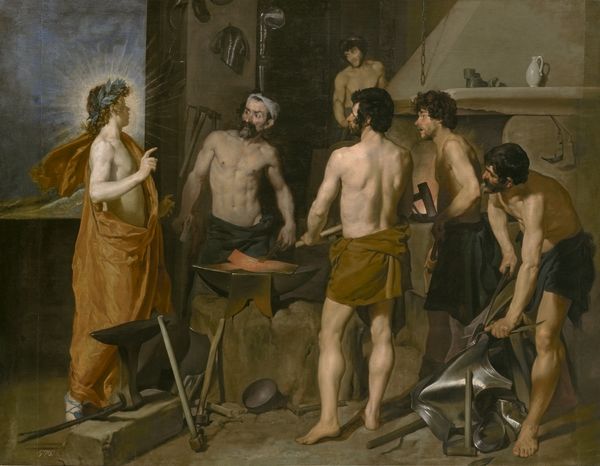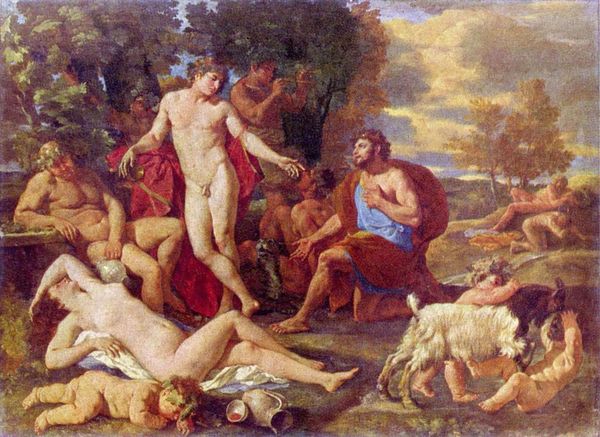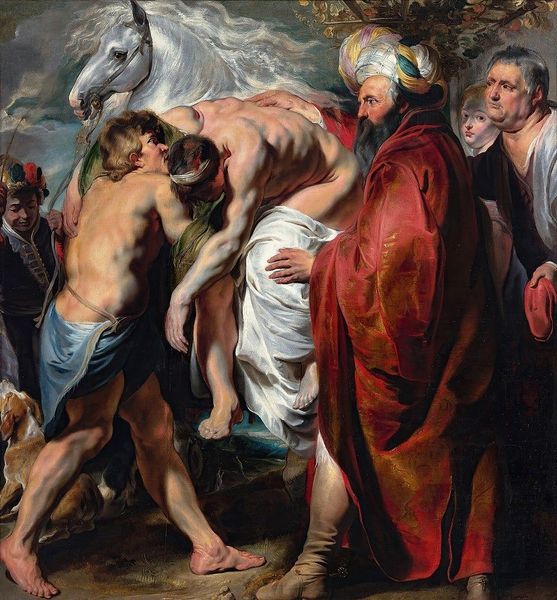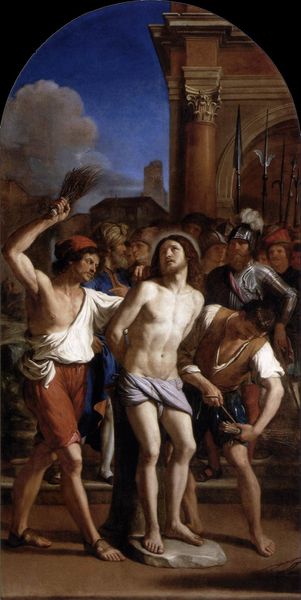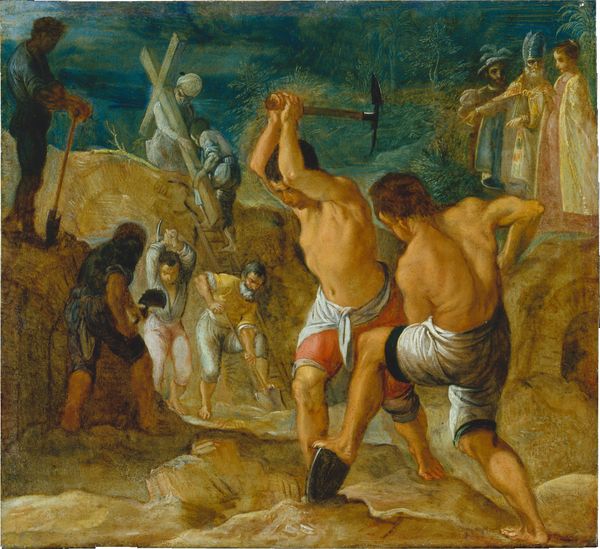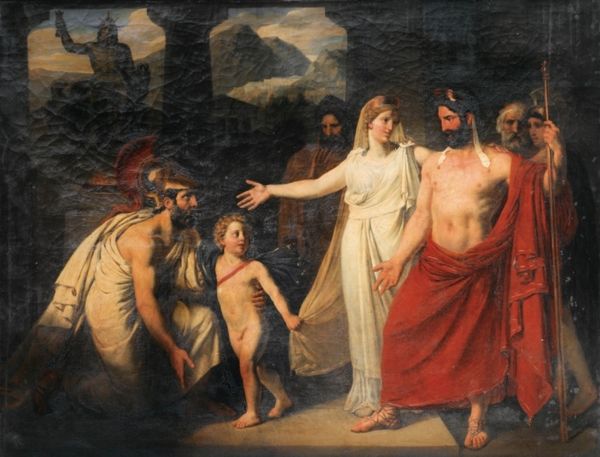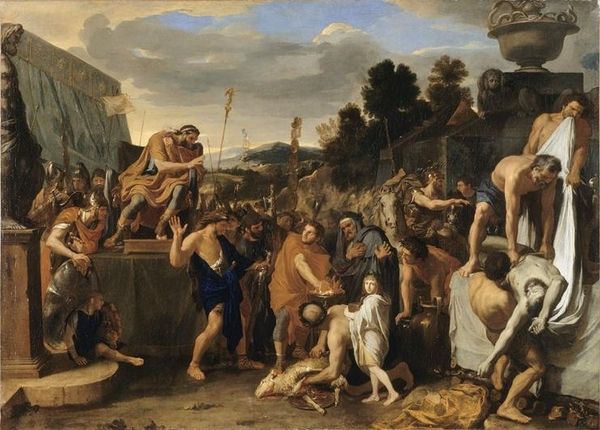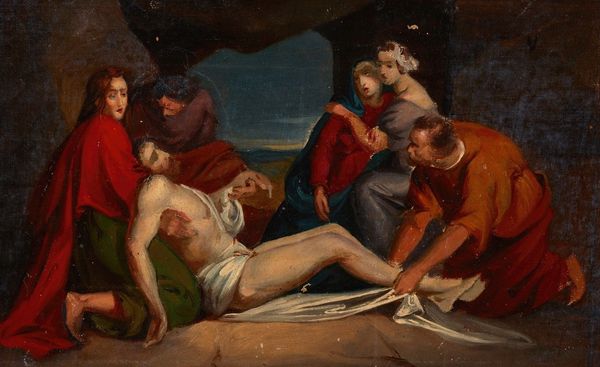
painting, oil-paint
#
neoclacissism
#
allegory
#
painting
#
oil-paint
#
greek-and-roman-art
#
classical-realism
#
oil painting
#
mythology
#
history-painting
Copyright: Public Domain: Artvee
Curator: The cool detachment and somewhat staged, sculptural qualities give me the impression of observing a morality play unfolding, despite the apparent casualness of dress here. Editor: I see it too. We are looking at Jean Auguste Dominique Ingres' early painting, "Achilles Receiving in his Tent the Envoys of Agamemnon," made around 1801 using oil paint. He was a young man, and this classical subject offered him an opportunity to work through neoclassical ideals. Curator: Achilles' rejection of Agamemnon, and the symbolic and literal rejection of empire becomes a loaded site for interpreting resistance to power, but on whose terms? Whose access? Editor: Exactly. And what are the means to arrive at that access? It is evident the process of sketching, redrafting, and applying paint. He utilizes a restricted palette: a muted red and ochre, creamy whites, but how does it work? The texture in some parts looks almost dry-brushed. Curator: Consider how the artist situates male intimacy and its refusal in this charged narrative. The material is made, bought, sold, but in ways that elevate it far from the process. The sensuality apparent becomes so by contrast to an elite power struggle. It presents as detached rather than subversive in some ways. Editor: Detached because he had to convince others of his prowess through such displays of skill and understanding, through subject and material. You sense the artist's labor striving towards acceptance. Curator: I understand that striving; and in that striving there are questions of, how does this kind of classical heroism impact our contemporary, lived reality? Can we divorce that valor from its consequences on a much grander, perhaps global, stage? Editor: An early work in oil and yet the seeds are there to explore those questions – to question empire, masculinity, power, production, skill, even then. Curator: Agreed, this scene is about power, resistance, labor, and even the materiality is a signifier. A morality play unfolding right before our eyes, painted with calculated intention. Editor: Indeed. A canvas created within the constraints of a moment that makes its meaning now as much as it did then.
Comments
No comments
Be the first to comment and join the conversation on the ultimate creative platform.
